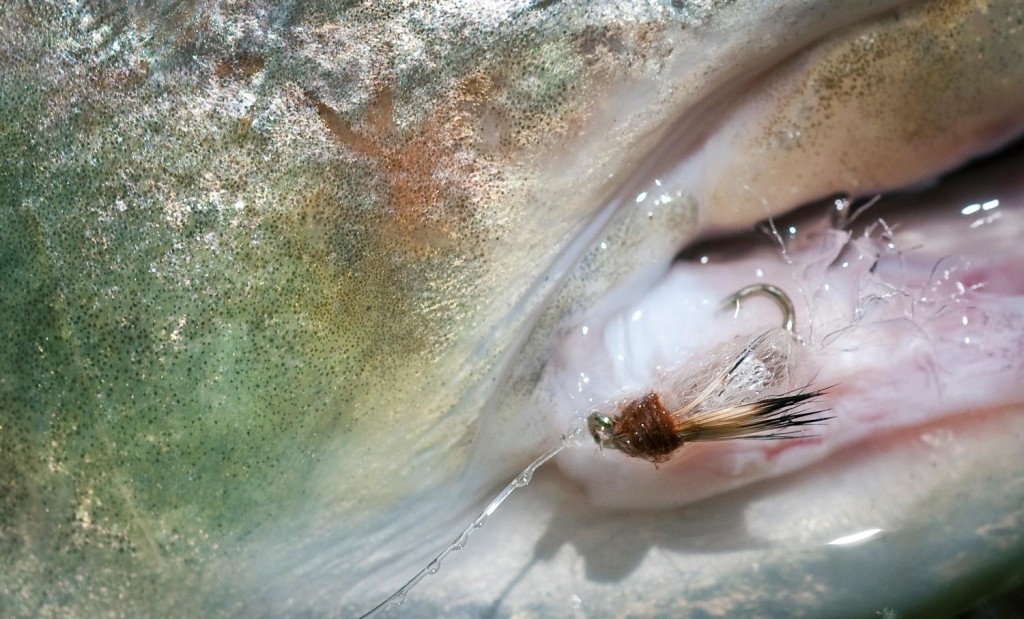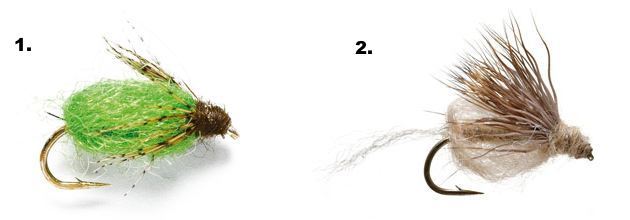Caddisflies, who doesn’t love them?
I can assure you trout sure do. Tying a caddisfly imitation on, is usually not a bad move on any trout water you visit. Globally, there’s thousands of different species of caddisflies, and that fact alone, one could argue caddisflies are the most abundant and popular aquatic insects found in trout water. If I remember correctly, my first trout landed on a dry fly was with an Elk Hair Caddis. That was a long time ago, back when I knew nothing about fishing caddis pupa patterns and how important they were. I’ve since, with the help of the great Gary LaFontaine, author of the famous book, “Caddisflies”, deepened my knowledge of this aquatic insect, and I’ve built a whole new appreciation and respect for the importance they have in a trout’s diet. Year-round, but particularly during the spring, early summer and fall, fly anglers should be well stocked up on caddisfly pupa fly patterns.
It’s safe to say the most effective way to catch the trout during a caddisfly hatch is to fish caddis pupa imitations. I’ve got many different caddisfly pupa patterns in my fly box, but over the years, LaFontaine’s deep sparkle pupa and emergent sparkle pupa have caught me more fish than all the other pupa patterns combined. These patterns should be in every trout anglers fly box. Gary LaFontaine did an excellent job of researching and studying the characteristics, underwater look and behavior of emerging caddis pupa. He used aquariums with living caddisfly specimens, and spent countless hours scuba diving on rivers during caddisfly hatches to gain accurate insight of what the trout see during a caddisfly hatch. He then took the research and data he collected and hand picked fly tying materials that he could use to design and tie accurate caddisfly patterns for each life-stage of the aquatic insect. This was an astonishing feat that took Gary LaFonataine twenty years to compile and complete. We all owe him a great deal of gratitude and thanks for all his hard work. Without his contributions who knows where we’d be today in understanding the life-cyle of caddisflies and going about imitating them.
Fly Patterns: 1. LaFontaine’s Deep Sparkle Pupa 2. LaFontaine’s Emergent Sparkle Pupa Comments: Caddis pupa can be tied or purchased in several different colors variations with or without beads.There are lots of anglers that opt for strictly fishing adult caddisfly patterns during a hatch, but most of the time that’s because they don’t understand the life-cyle of the caddisfly, nor can they decipher which stage of the hatch their witnessing. When the fish are keying in on the adults on the surface you can have great success, but the fact is, trout concentrate their efforts feeding on the pupa stage of the caddisfly the most, and pupa imitations can catch fish throughout the entire hatch. The reason for this is because the pupal stage is one of the most vulnerable and helpless stages of the caddisflies life-cylce and it’s one of the easiest times for trout to feed on them. Furthermore, their emergence period puts them in front of trout longer than any other stage in their life-cyle. Emerging caddis pupa often drift for long distances below the surface as they make their way ascending to the surface, split open their shuck, and struggle to get air-born. Anglers wanting to maximize their catch rate during a caddisfly hatch need to first determine what stage of the hatch the caddisflies are in when their on the water fishing. At the beginning, during the first stages of the hatch, there will be far more emerging caddis pupa along the bottom of the stream than there will be adults on the surface, and the majority of the trout will be positioned deep in the water column picking them off, one by one. At this stage anglers should be dead-drifting patterns like LaFontaine’s deep pupa on a nymph rig close to the bottom to keep their fly in the target zone. As the hatch intensifies and more caddisflies make their way and congregate closer to the surface, the trout will follow them by relocating higher up in the water column so they can continue feeding on the highest density of drifting insects. At this stage of the hatch, anglers should switch to emerging patterns like LaFontaine’s sparkle caddis emerging pupa and dead-drift their fly higher in the water column. Either shortern the depth of your nymph rig or fish an adult caddisfly (dry), with an emerging sparkle pupa tied on a long dropper (36″). Swinging or twitching your caddis pupa at the end of your drift will do a great job of imitating the caddisflies at this stage of the hatch. For the most part though, you still want to have your flies dead-drifting most of the drift.
Just the other day guiding a client we were slap in the middle of a caddisfly hatch. The hatch had already been going on for a couple hours but the trout still weren’t taking adults on the surface. You could watch the dancing and hopping adults fly away untouched, but we kept seeing splashy rises. Anglers that witness this situation should be tipped off that the trout are taking emerging pupas. The water was clear and we could actually see several trout. I had my client position upstream of the trout make an upstream cast inline with the trout’s feeding lane, and throw a couple minds. Just when the fly began entering the trout’s field of view, I had him stop following his rod tip with his indicator so his flies would rise up in the water column to mimic an emerging pupa. The strategy worked wonderfully and we landed several nice rainbows this way. Its not always this easy to take fish on caddisfly pupa. At times it can be one of the most difficult life-cycle stage of the caddisfly to interpret and dial in on. Some days the trout will win, other days the angler. Your first step towards victory though starts by making the decision to fish caddis pupa imitations.
I’ll be following up this post down the road with the next stages of the hatch. We still haven’t talked about fishing this hatch when trout are taking adults, targeting egg laying caddis or spent caddis. Entire books have been written on fishing the Caddisfly hatch. For now, just go tie up or purchase some of LaFontaine’s pupa patterns. They’re on fire for me right now.
Keep it Reel,
Kent Klewein Gink & Gasoline www.ginkandgasoline.com hookups@ginkandgasoline.com Sign Up For Our Weekly Newsletter!


Good post Kent. Right on target, as usual.
This is perfect timing. I’m going to give this a shot tomorrow if I see an opportunity on my local stream.
Great timing Kent. The hooch hatches are picking up right now…the old dry dropper is killing em! I pretty sure I read this one last year and that’s how I got turned on to these two patterns to start with!
Would like to try these on our Scottish rivers. Any information on how to tie them would be appreciated
I’d love a post on how to tie either of the patterns mentioned above. Thanks, Kent
The two I fish are Barr’s Graphic in green and brown, or this fly:
http://www.thehaddiscatch.com/2012/10/tuesday-tie-silvey-ish-bh-pupa.html
I call it the sparkle braid pupa, mainly because that’s what the thorax is made of… Super easy tie, you can make the legs/head using CDC, partridge feathers, ostridge herl, or even some really spiky dubbing. Awesome runoff fly for muddy water as well.